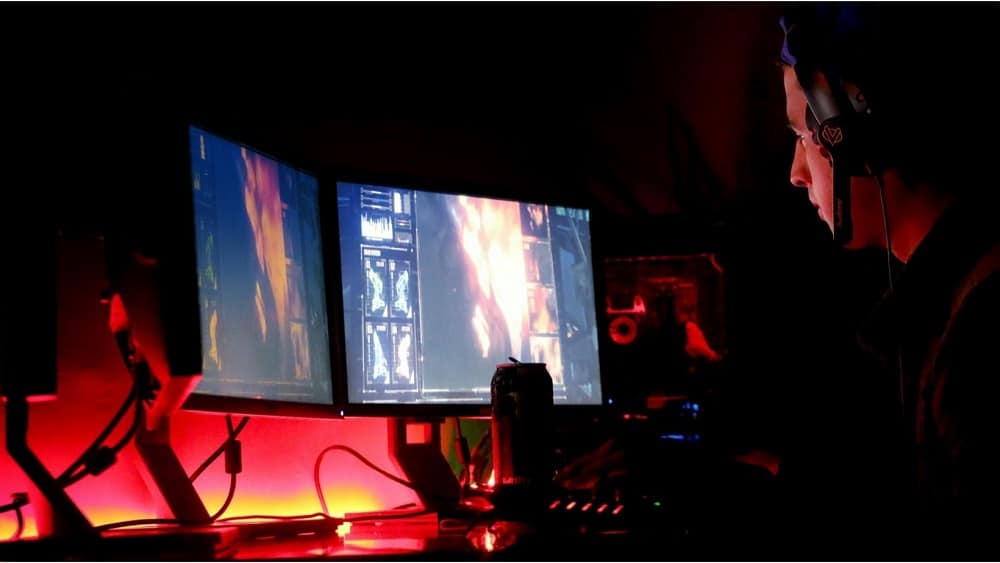Does Your Monitor Affect Fps?

Most gamers are well aware of how much your components can affect your gaming performance, and most will spend incredible amounts of money securing the latest and greatest graphics cards, processors and other important components necessary to facilitate the best gaming experience possible.
However when it comes to peripherals, particularly monitors, people often don’t realise the impact this can have on your gaming experience.
There’s very little point getting the most powerful PC you can afford, with the most amazing performance, if you’re plugging it into a monitor that isn’t able to make use of the quality the PC is capable of.
It’s also true that in some cases, the wrong monitor can have a negative effect on your gaming experience and FPS, particularly if it’s a high resolution monitor or has a slow response time.
There are many different things to consider when looking at gaming monitors, from the technology the panel uses, to its response time, resolution, color performance and additional features such as G-Sync, Freesync and various extras that some may find highly desirable.
In this guide we’re going to look at all of these aspects of monitor design and highlight how they can affect your gaming performance, from both your FPS to the graphical fidelity you enjoy while you play.
The first thing to understand is yes, your monitor can absolutely affect your gaming performance and FPS.
Now let’s take a look at why.
Resolution
Most people are aware that monitors and screens are rated according to their resolution primarily. A full HD monitor starts at 1920 x 1080p and this has been the most popular and widespread gaming monitor resolution for over a decade now. This resolution gives a great balance between clarity and performance, and most modern computers and components can run games very well at this resolution, which will mean you get a smooth and relatively high amount of FPS, and decent graphical fidelity also.
Additional features such as G-Sync and Freesync can make performance even smoother by using proprietary software in these monitors to prevent screen tearing and other undesirable performance when gaming at high FPS, and helps make gameplay even smoother and high quality.
However in recent years many gamers have been pushing for high resolutions such as 1440p and even 4K gaming, with even the major console manufacturers trying to push the boundaries of resolution and performance.
While gaming at 1440p and 4K certainly makes games much more crisp, especially if you sit far back from your monitor, they can have a huge impact on your FPS and without high quality processors and graphics cards, you will notice a performance drop if you’re trying to render at high resolution without a powerful enough PC.
If you do have the processing power to do this however you will certainly notice your games becoming much more crisp and high fidelity, and as technology improves more and more people increasingly opt for 1440p or 4K gaming.
Panel Type
The panel type used by your monitor will have some effect on your gaming performance, as different panels can affect color reproduction quite drastically.
In terms of pure color accuracy, IPS monitors are the absolute best and provide wider viewing angles, deeper, richer colors and a far more vibrant and realistic color profile for your games which makes them look stunning and vivid.
For the longest time the drawback to IPS panels was that they had noticeably slower response times which meant there was some latency in how the game was shown on the screen, which meant some fast paced games such as multiplayer shoots would feel unresponsive. However lately there have been advances and some of the better IPS panels available today sport response times of 1ms, making them much more responsive while still providing excellent color accuracy and viewing angles.
The only other drawback to IPS panels is that they sometimes suffer from backlight bleed, which makes dark scenes in games and movies look washed out or even show visible backlighting which can highly affect the quality of your experience.
On the other hand there are TN panels, which have the lowest response times and are the go to choice for competitive gamers at the highest level. These monitors also don’t suffer from as much backlight bleed as IPS panels, however TN monitors are known to be less capable of providing good colors and generally give bad viewing angles which only makes them suitable for head on usage.
Size
Monitors come in varying sizes, from small desktop screens at around 22-24 inches to massive wide screen monitors and multi screen setups.
There is some considerable confusion about screen size and many people think this will affect your FPS and performance, however it absolutely doesn’t.
It’s only the resolution that affects performance in this way.
If you have a 50 inch screen plugged into your PC but its only a 1080p resolution, then you will get the same FPS as with a 20 inch 1080p monitor.
Using a dual or triple monitor setup also causes some confusion about performance implications, however it really depends on how you use the second monitor.
If you’re using your second monitor to browse or use discord while gaming, then you will see a negligible difference in performance from a dual monitor setup.
However if you play your game across two or three monitors, or do intensive tasks on your second monitor while gaming, you will definitely see performance drops in FPS and smoothness, so take this into account before you consider buying a second monitor.
